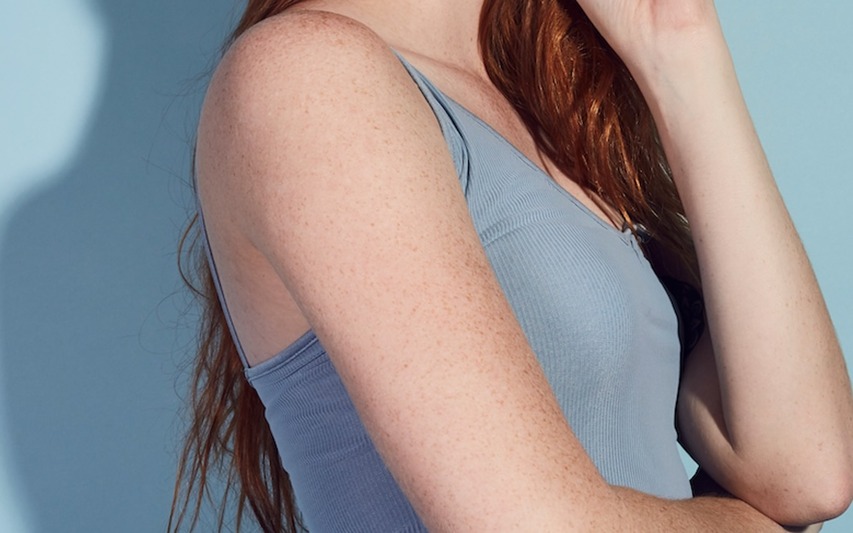
Understanding and Managing Keratosis Pilaris: Tips for Clearer Skin
Many teens experience rough, red bumps on the outer arms, and sometimes, similar patches appear on the thighs. This common skin condition, often mistaken for acne, is called keratosis pilaris (KP). While it’s harmless, it can be a cosmetic concern for those who have it. Here’s what you need to know about KP, why it occurs, and how to treat and prevent flare-ups.
What is Keratosis Pilaris?
Keratosis pilaris is a skin condition where dead skin cells block hair follicles, leading to tiny, rough bumps, often with a dry, sandpaper-like texture. It’s prevalent among children and teenagers but can affect individuals of all ages. The good news? KP often fades on its own, typically by age 30. Although it may be bothersome, it’s entirely benign and does not require medical attention.
What Causes Keratosis Pilaris?
KP occurs when hair follicles become clogged with keratin, a protein found in skin, hair, and nails. The exact cause of this buildup is unknown, but genetics play a role, as KP often runs in families. While it’s not contagious, factors like dry skin, asthma, eczema, and obesity may increase the risk. KP often improves in summer’s humid months and worsens during winter.
Recognizing the Symptoms of KP
Keratosis pilaris presents as small, rough bumps that may resemble goosebumps, chicken skin, or a mild rash. These bumps may appear skin-colored, white, red, or brown and can be itchy, though they’re typically not painful. KP is commonly found on the thighs, upper arms, cheeks, and buttocks but can appear anywhere on the body.
Treatment Options for Keratosis Pilaris
While there’s no cure for KP, regular skincare can improve its appearance. Be patient, as results may take weeks or months to appear. Here’s what you can do:
- Moisturize: Hydration is crucial. Use a gentle, fragrance-free moisturizer after showers while your skin is still damp. Reapply 2-3 times a day if needed.
- Gentle Cleansing: Wash with lukewarm water and mild soap, avoiding harsh cleansers or exfoliators that may worsen KP.
- Salicylic Acid: This beta hydroxy acid softens keratin plugs, clears dead skin cells, and smooths the skin. Salicylic acid is a beneficial ingredient in KP creams, helping reduce roughness and redness.
- Benzoyl Peroxide (BPO): For more severe KP, BPO can help by clearing clogged pores and calming inflamed skin. Micronized benzoyl peroxide penetrates the skin deeply with minimal irritation.
- Niacinamide: A soothing ingredient that hydrates and strengthens the skin barrier, niacinamide is especially helpful for treating KP on the cheeks.
- Topical Retinoids: Retinoids promote cell turnover and prevent clogged follicles, helping smooth out skin texture.
- Green Tea Extract: Green tea is rich in antioxidants and has anti-inflammatory properties that soothe the skin and fight free radicals.
- Tea Tree Oil: Known for its antimicrobial and anti-inflammatory benefits, tea tree oil can help with KP when diluted with a carrier oil.
Diet and Supplements
Some studies suggest a link between KP and deficiencies in certain nutrients. Adding these to your diet may help:
- Vitamin A: Found in foods like beef, eggs, carrots, and leafy greens, vitamin A supports skin cell turnover.
- Vitamin B5 (Pantothenic Acid): Supports keratinocyte growth, helping to maintain a healthy skin barrier.
Preventing KP Flare-Ups
Here are additional tips to manage and reduce KP flare-ups:
- Avoid Tight Clothing: Tight clothes trap heat and can rub against the skin, worsening KP.
- Shower After Sweating: Sweat and humidity can clog pores, so shower promptly after exercise.
- Choose Fragrance-Free Products: Scented soaps and lotions may irritate KP-prone skin. Look for unscented products to prevent dryness and inflammation.
- Skip Loofahs and Harsh Scrubs: These can damage the skin and increase keratin production. Instead, pat the skin dry after showering.
- Use a Humidifier: Increasing indoor humidity levels can help prevent dry skin and potentially improve KP.
Final Thoughts
While KP can be frustrating, following a gentle, consistent skincare routine with targeted ingredients can help improve its appearance over time. If self-care methods don’t yield the desired results, consider consulting a dermatologist for prescription treatments. Remember to be patient, as visible improvements often take time.
Shop:
Skin Clearing Vitamins & Minerals
Body Acne Treatment
MDacne SA 0.5% Cleanser (Amazon)
References:
Keratosis pilaris: a common follicular hyperkeratosis
Treatment of keratosis pilaris and its variants: a systematic review
Keratosis Pilaris and its Subtypes: Associations, New Molecular and Pharmacologic Etiologies, and Therapeutic Options
To find the right acne treatments for your unique skin, take the free skin assessment by clicking here.



